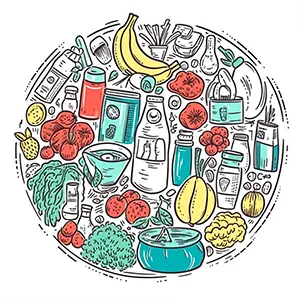20 Genius Hacks to Slash Your Grocery Bills in Half - Budget Shopping Secrets Uncovered!
Are you tired of watching your hard-earned cash disappear at the grocery store checkout? Do you dream of slashing your grocery bills in half without sacrificing taste or nutrition? We’ve got you covered! In this article, we’ll reveal 20 genius hacks that will transform your shopping routine and help you uncover the best-kept budget shopping secrets.
Key Takeaways on How to Save Money on Grocery Shopping
- Set a realistic grocery budget and use a budget app to track your spending.
- Plan your meals, create a grocery list, and prioritize nutrient-dense foods.
- Research local grocery stores and compare prices to find the best deals.
- Embrace seasonal and local produce, and utilize your freezer to preserve food.
- Be flexible, use technology and avoid convenience foods to save money.
1. Setting Your Grocery Budget
Setting a grocery budget is the first step towards saving money on your food expenses. It’s essential to establish a realistic budget that considers your income, monthly expenses, and nutritional needs. Break down your budget into weekly or bi-weekly segments, making it easier to manage and monitor your spending. By allocating funds for specific categories like fresh produce, meat and poultry, drinks, and pantry staples, you can prioritize your spending, set a budget for each category and ensure you cover all your essentials.

Periodically review your grocery budget and spending habits to identify areas for improvement. Maybe you’re consistently overspending on snacks, or perhaps you’re saving more money than expected by shopping sales. Use these insights to fine-tune your budget and become an even more efficient shopper.
Using a budget app can be a game-changer in helping you stick to your grocery budget. These apps track your spending in real-time, categorize your purchases, and offer insights into your spending habits. This level of accountability will undoubtedly help you make smarter choices and reduce your grocery bill.
2. Mastering Meal Planning
Going grocery shopping without a plan is an easy way to lose track of your spending. Effective meal planning is a powerful tool for saving money, reducing impulse buying, and maintaining a balanced diet. By dedicating time each week to create a comprehensive meal plan, you can ensure that you purchase only what you need and make healthier choices for you and your family.
Tip
Incorporating healthy snacks into your routine, such as fresh fruits, nuts, yogurt, and whole-grain crackers, will contribute to a well-rounded diet and keep you satisfied throughout the day.
When planning your meals, be sure to factor in sales, discounts, and seasonal produce. Design your meal plan around these budget-friendly items and incorporate leftovers and special occasions to avoid food waste.
With a detailed grocery list in hand, based on your meal plan, you’ll stay focused and organized while shopping, which will help prevent impulse buying and keep you on track with your budget.
3. Choosing the Right Grocery Stores
Selecting the right grocery stores is crucial to saving money and making the most of your shopping experience. Research different stores in your area, including discount stores and local farmers markets, to compare prices and find the best deals.
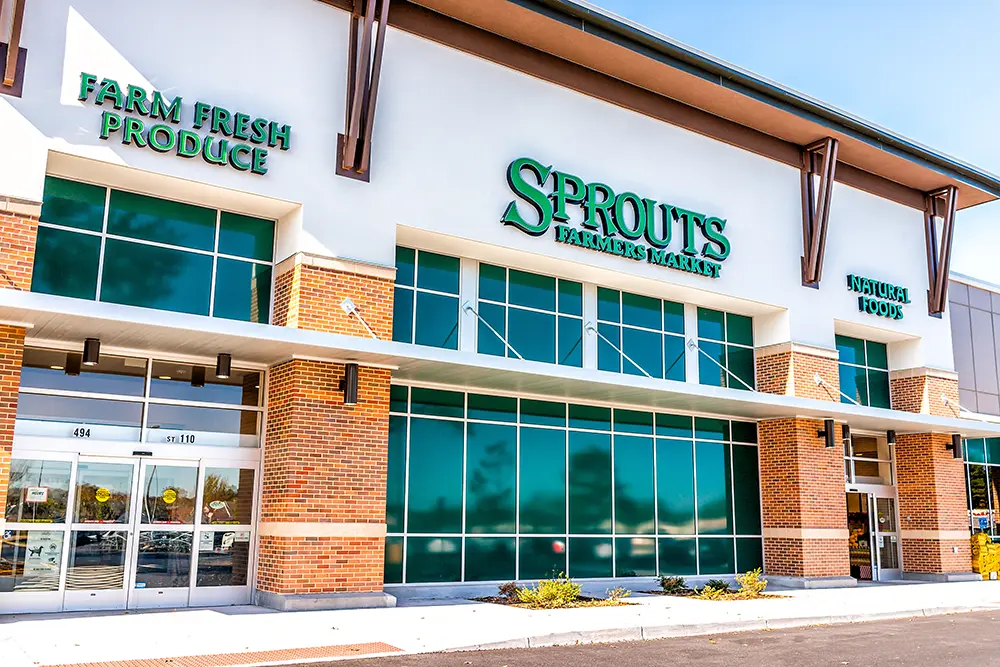
Don’t forget to factor in the convenience of the store’s location and its shopping environment. By identifying the stores that best suit your needs, you can optimize your grocery shopping trips (save on gas) and maximize your savings.
Online grocery shopping offers numerous benefits, such as access to exclusive deals, a wider range of products, and the ability to easily compare prices across different stores. Additionally, shopping for groceries online can save you time by eliminating the need to visit multiple stores, and you can often find specialty items and bulk goods not available in traditional grocery stores.
Tip
While considering online shopping, be mindful of delivery fees, and try to consolidate your purchases to minimize costs or take advantage of free delivery promotions.
4. Shopping Seasonally and Locally
Focusing on seasonal produce is a smart strategy to save money while enjoying better quality fruits and vegetables. In-season items are often a cheaper option, as they’re more abundant and don’t require long-distance transportation. Plus, the nutritional value of these fruits and vegetables is generally higher due to their peak ripeness. By incorporating seasonal produce into your shopping routine, you can ensure you’re getting the best prices on the freshest, most nutritious ingredients.

The local farmers market is an excellent source of fresh, seasonal produce. Shopping at these venues not only ensures you have access to the freshest fruits and vegetables but also supports your local economy and reduces the environmental impact of food transportation. Website seasonalfoodguide.org provides a comprehensive guide to seasonal fruits and vegetables in your area.
By embracing seasonal shopping, you can create more diverse and delicious meals throughout the year. In addition to saving money, you’ll enjoy the superior taste and quality of in-season produce, making your meals more satisfying and enjoyable.
5. Clip Coupons and Find Good Deals
One of the most effective ways to save money on your grocery shopping is by taking advantage of coupons and deals. With a little research and organization, you can significantly reduce your grocery bills and make the most of your budget.
Tip
Coupons are available through various sources, such as newspapers, store flyers, and online platforms, so be sure to keep an eye out for great deals and discounts on your favorite products.
Manufacturer coupons are a valuable resource for additional savings on your grocery purchases. These coupons can often be found on product packaging, online, or in-store displays. Some stores even offer double coupon promotions, where they match the value of the manufacturer coupon, leading to even greater savings. Combining manufacturer coupons with store sales can result in significant discounts on your favorite products, ensuring you get a good deal every time you shop.
Before heading to the grocery store, spend some time organizing your coupons and preparing a shopping list that takes advantage of current deals. By carefully planning your shopping trip, you can maximize your savings and make your money go further. Don’t be afraid to stock up on non-perishable items or products with a long shelf life when you find a great deal. This way, you’ll have a well-stocked pantry and save money in the long run.
6. Exploring Store Brands
Smart shopping involves exploring different options and not limiting yourself to just one store. While you may be a huge fan of a particular store, it’s essential to remain open to other options that might offer better deals on certain items. By comparing prices and sales at various stores, you can make informed decisions on where to shop and save a little money in the process.
Store-brand products are often just as good as their name-brand counterparts but come with a significantly lower price tag. These products can provide substantial savings without sacrificing taste or quality. Consider trying store-brand items for pantry staples, such as canned goods, pasta, and baking ingredients. You might be pleasantly surprised by the quality and taste while saving money on your grocery shopping.
7. Buying in Bulk
Embracing the concept of buying in bulk can lead to significant savings on your grocery shopping expenses. When you start grocery shopping with a well-prepared list and a plan, you can easily identify items that are more cost effective to purchase in larger quantities.
Tip
Household essentials, such as toilet paper, cleaning supplies, and personal care products, are often cheaper per unit when bought in bulk, resulting in long-term savings.
Planning ahead is crucial when considering bulk grocery purchases though. Assess your storage space and consumption patterns to ensure that you don’t overbuy, leading to potential waste or clutter.
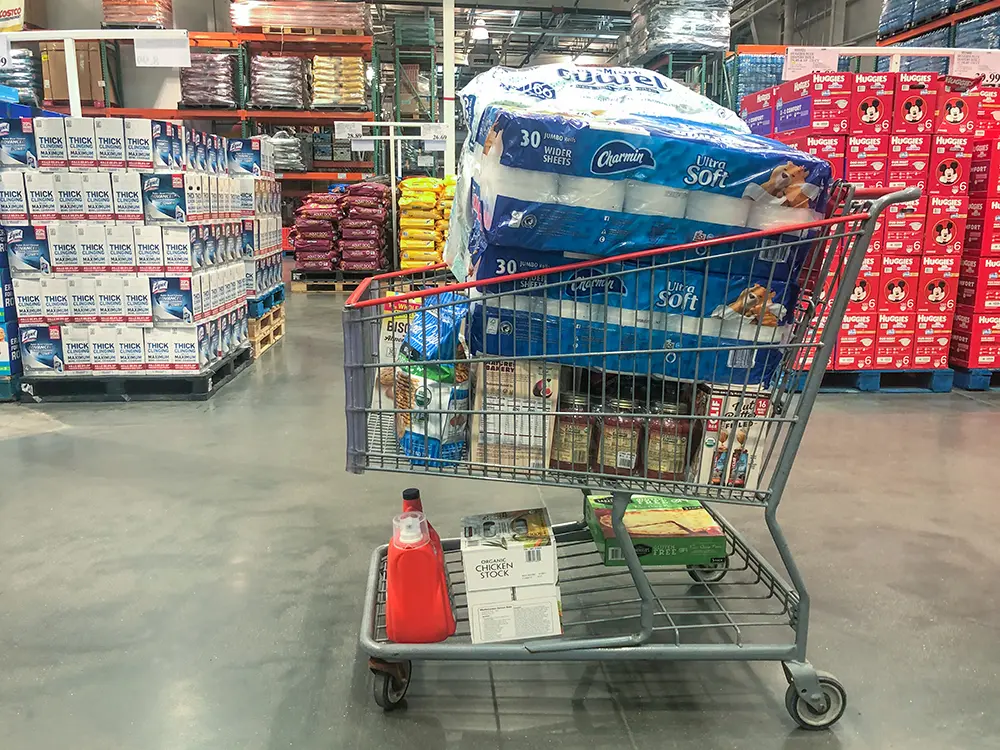
Additionally, prioritize non-perishable items and those with a longer shelf life to minimize the risk of spoilage. By thoughtfully incorporating bulk purchases into your shopping plan, you can take advantage of lower prices and reduce the frequency of shopping trips for specific items.
It’s also essential to compare prices and deals on food prices and bulk items across different stores and online platforms. Warehouse clubs, discount stores, and online retailers often offer competitive prices on bulk purchases.
8. Understanding Unit Pricing
One of the best grocery shopping tips to help the average person save money is understanding unit pricing. Unit prices allow you to compare the cost of different sizes and brands of the same product on a per-unit basis, such as per ounce or pound. By focusing on unit prices rather than the overall cost, you can make more informed decisions about which products offer the best value.
For example, when shopping for cottage cheese, you may find that the larger container has a lower unit price than the smaller one, even if the overall cost is higher. By choosing the larger container, you’ll be getting more value for your money. This principle applies to various products, whether you’re shopping for groceries online or in-store.
However, it’s essential to balance the potential savings from unit pricing with your actual consumption patterns and storage capabilities. Purchasing larger quantities may not always be the best choice if you’re unable to consume the product before it expires or if you lack sufficient storage space.
9. Prioritizing Nutrient-Dense Foods
Opting for nutrient-dense foods is not only beneficial for your health but also a great idea for your wallet. These foods provide a high nutritional value per calorie, allowing you to feel satisfied and nourished without spending a fortune. By prioritizing nutrient-dense foods in your grocery shopping, you can make the most of your food budget while ensuring that your meals are wholesome and delicious.
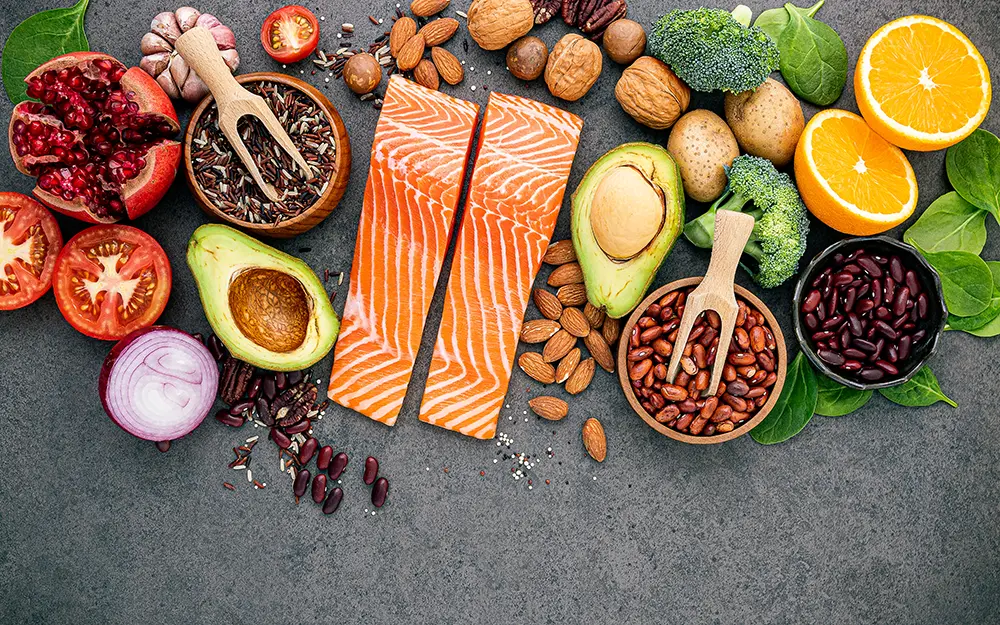
For example, choosing to buy oatmeal, a nutrient-dense and affordable option, is an excellent way to start your day. Oatmeal is packed with fiber, vitamins, and minerals, and can be easily customized with your favorite toppings to create a satisfying and nutritious breakfast. Similarly, incorporating whole grains, such as brown rice or quinoa, into your meals provides essential nutrients and keeps you fuller for longer, reducing the need for costly snacks or additional servings.
When planning your meals, focus on incorporating a variety of nutrient-dense foods, such as fresh fruits and vegetables, lean proteins, and healthy fats. These foods not only offer significant health benefits but also help you stretch your grocery budget by reducing the need for processed or convenience foods, which tend to be more expensive and less nutritious.
10. Minimizing Food Waste
Minimizing food waste is a crucial strategy to make the most of your groceries and save money. By carefully managing your food purchases and consumption, you can reduce the amount of wasted food and ensure that your hard-earned money is well spent.

One effective approach is to pay close attention to expiration dates when buying and storing groceries, making sure to enjoy your items while they’re fresh and store them properly to extend their shelf life.
Regularly checking your pantry and refrigerator for items nearing their expiration dates can help you prioritize their consumption and avoid unnecessary waste. By incorporating these items into your meal planning, you can create delicious and budget-friendly dishes while minimizing food waste.
Additionally, learning how to properly store food, such as using airtight containers or freezing items to prolong their freshness, can significantly reduce spoilage and save you money in the long run.
Another helpful technique is to repurpose leftovers and food scraps. For example, you can transform leftover vegetables into a delicious soup or stir-fry or use stale bread to make homemade croutons or breadcrumbs. By finding creative ways to utilize every part of your groceries, you can minimize food waste, save money, and enjoy a diverse range of delicious and budget-conscious meals.
11. Embracing Meatless Meals
Embracing meatless meals is an excellent strategy to save money on groceries and lower your overall grocery bill. Meat is often one of the most expensive items on a shopping list, and by reducing its consumption or opting for alternative protein sources, you can make a significant impact on your budget. Incorporating meatless meals into your weekly meal plan can help you to save money on groceries while still enjoying delicious and satisfying dishes.
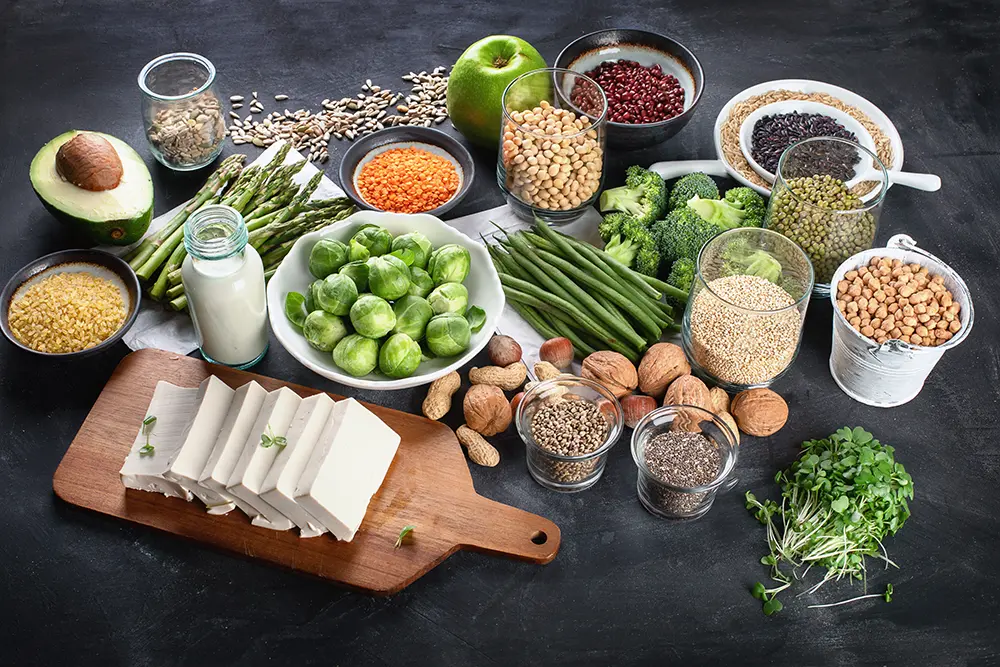
Numerous budget-friendly and nutrient-rich plant-based protein sources can easily replace meat in your favorite recipes. Beans, lentils, tofu, and tempeh, for example, are not only cost-effective but also provide essential nutrients and a satisfying texture. By exploring new ingredients and experimenting with different meatless meal options, you can create a diverse range of dishes that keep both your taste buds and wallet happy.
Adopting a flexible approach to your grocery shopping can also help you save money on groceries. By incorporating meatless meals into your routine and staying open to trying new ingredients, you can reduce your grocery bill and discover an array of delicious, budget-friendly dishes.
12. Shopping the Perimeter
One of the most effective tips for grocery shopping to reduce your grocery bill is to shop the perimeter of the grocery store. This strategy involves focusing on the outer edges of the grocery store, where fresh produce, meats, dairy products, and whole grains are usually located. By shopping the perimeter, you can prioritize healthier, whole-food options and avoid the more expensive, processed items typically found in the center aisles.

Learning how to grocery shop the perimeter can lead to significant savings on your grocery spending. Produce, for example, can often be more cost-effective than its pre-packaged or processed counterparts.
Moreover, these items tend to be more nutrient-dense, providing a greater value for your money. By concentrating on the perimeter, you can make better choices for both your health and your wallet.
Of course, it’s important to maintain a balanced approach when employing this strategy. Some essentials, such as spices, canned goods, and household items, will still need to be purchased from the inner aisles.
However, by focusing the majority of your grocery shopping on the perimeter, you can develop a more cost-effective and health-conscious shopping routine, ultimately leading to a reduced grocery bill and a more satisfying meal plan.
13. Making the Most of Your Freezer
By using your freezer to store and preserve food, you can take advantage of sales at the grocery store, stock up on essentials, and reduce food waste. Additionally, preparing freezer meals is a fantastic way to save time and money, ensuring you always have a delicious, budget-friendly meal on hand when needed.
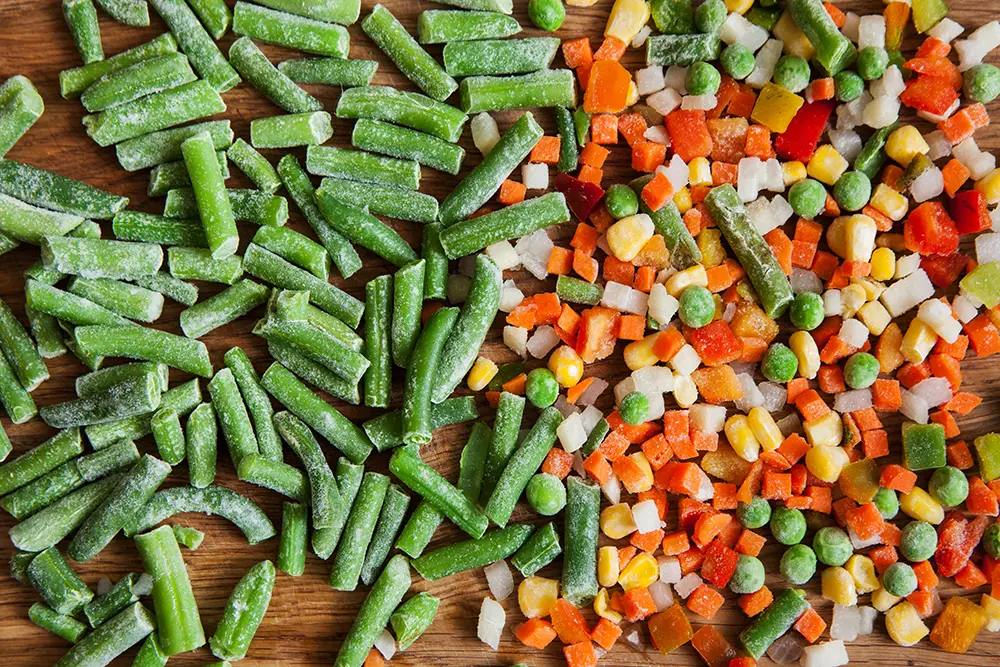
When you come across a great deal at the grocery store, don’t hesitate to stock up on items that can be easily frozen, such as meat, fish, fruits, and vegetables. By purchasing these items in bulk when they’re on sale and freezing them for later use, you can save a considerable amount of money. Just be sure to plan ahead and properly wrap and label your frozen items to maintain their quality and prevent freezer burn.
Another valuable strategy is to prepare freezer meals in advance. Dedicate a day to cooking and assembling multiple meals that can be stored in the freezer and quickly reheated when you’re short on time or energy.
Not only will this save you money by allowing you to use ingredients more efficiently, but it also helps you avoid the temptation to spend extra money on takeout or convenience foods. By utilizing your freezer to its full potential, you can reap significant savings and make the most of your grocery shopping budget.
14. Cooking from Scratch
When shopping on a budget, learning to cook from scratch can be your best friend. Preparing meals using basic ingredients rather than relying on pre-made or convenience foods can significantly reduce the money spent on groceries. By honing your cooking skills and experimenting with recipes, you can create delicious, satisfying meals that are both healthier and more cost-effective than their store-bought counterparts.

Opting for homemade versions of your favorite dishes is often a cheaper option, as you can control the ingredients and quantities used. This allows you to purchase items in bulk or take advantage of sales, further reducing the cost of your meals.
Cooking from scratch also enables you to avoid added preservatives, sugars, and unhealthy fats that are commonly found in pre-packaged foods, resulting in healthier and more wholesome meals for you and your family.
In addition to saving money, cooking from scratch provides an opportunity to develop new skills and explore different cuisines. As you become more proficient in the kitchen, you’ll find that creating meals from scratch becomes second nature, allowing you to make better use of your grocery budget and elevate your home cooking. Embrace the challenge of cooking from scratch, and you’ll soon discover the joy and savings that come from creating delicious, budget-friendly meals at home.
15. Befriending the Slow Cooker
Embracing the slow cooker is a fantastic way to save both time and money while preparing delicious, budget-friendly meals. Slow cookers allow you to cook a wide variety of dishes with minimal effort, and their low-and-slow cooking method is perfect for tenderizing less expensive cuts of meat, making them a valuable tool for those looking to reduce their grocery expenses.
One of the greatest benefits of using a slow cooker is its ability to transform simple, inexpensive ingredients into flavorful, satisfying meals. By slow-cooking tough cuts of meat, beans, or vegetables, you can extract maximum flavor while maintaining a budget-conscious approach to meal planning. Additionally, slow cookers are incredibly convenient, allowing you to simply set the timer, walk away, and return to a fully cooked meal.
Another advantage of using a slow cooker is the potential for batch cooking and meal prepping. With a slow cooker’s large capacity, you can easily prepare multiple servings of your favorite dishes in one go, saving time and effort throughout the week.
Simply portion out and store the extra servings in the refrigerator or freezer for quick, budget-friendly meals on busy days. By making the slow cooker your ally in the kitchen, you can enjoy mouthwatering, cost-effective meals without breaking the bank.
16. Shopping with a Calculator
When it comes to grocery shopping on a budget, bringing a calculator along can be a game-changer. By actively keeping track of the cost of items as you shop, you can maintain better control over your food budget and make more informed decisions about which products to purchase. This simple tool can help you avoid overspending and ensure that you stick to your grocery budget every time you shop.

Using a calculator while grocery shopping can also help you compare prices and determine the best value for your money. By calculating the cost per unit or serving, you can identify the most cost-effective options and avoid being swayed by marketing tactics or promotional deals that may not actually save you money in the long run. A calculator can help you make smarter choices that align with your budget goals.
Finally, having a calculator on hand can help curb impulse purchases. By seeing the running total of your grocery bill, you are more likely to be conscious of the financial impact of any unplanned items and think twice before adding them to your cart.
This heightened awareness can lead to more disciplined shopping habits and a greater ability to manage your food budget effectively. Armed with a calculator, you’ll be well-equipped to conquer the grocery store and maintain your budget with ease.
17. Picking the Right Time to Shop
It’s essential to consider factors such as the time of day, day of the week, and even your personal hunger levels before hitting the store.
One crucial tip is to avoid shopping on an empty stomach. Studies have shown that hungry shoppers tend to purchase more food items, particularly unhealthy, impulse-driven choices. By eating a light snack or meal before heading to the store, you can reduce the likelihood of making unnecessary purchases and stay focused on your shopping list.
Another important consideration is to shop during off-peak hours or days when stores are less crowded. This allows you to take your time comparing prices, scouting out deals, and making informed decisions without feeling rushed or overwhelmed.
Some stores may also offer discounts or markdowns on perishable items nearing their expiration dates during certain times of the day or week, providing an opportunity to score great deals on products you can use immediately or freeze for later use.
18. Considering the Cost of Convenience
Pre-packaged, ready-to-eat foods and pre-cut produce might save time and effort, but they often come with a higher price tag compared to their whole, unprocessed counterparts. By choosing less convenient options and investing a little extra time in preparation, you can significantly reduce your grocery expenses while maintaining better quality and nutritional value in your meals.
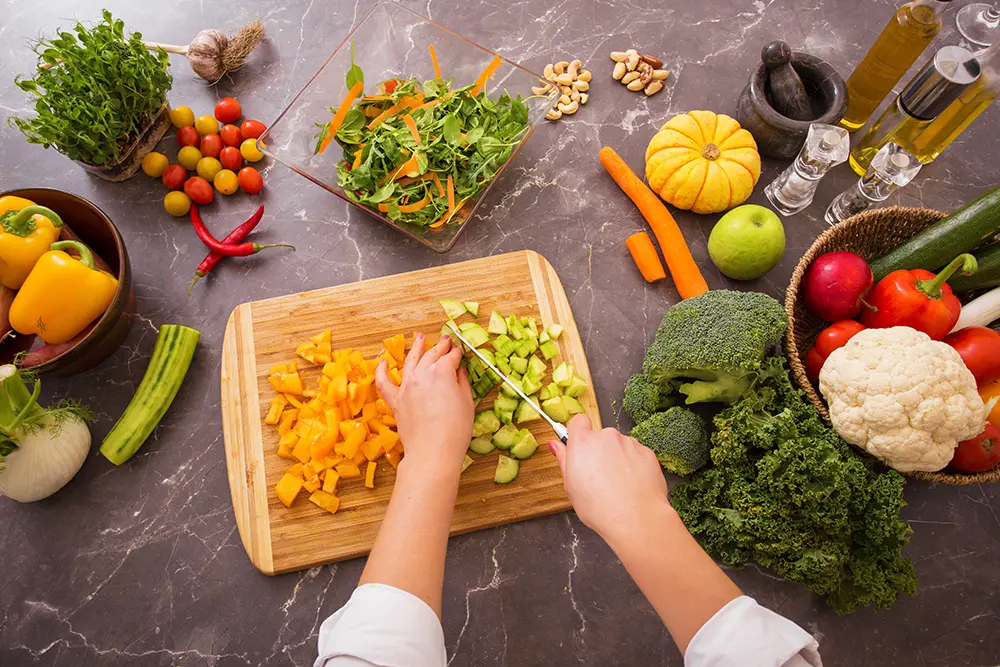
For instance, instead of buying pre-cut fruits and vegetables, opt for whole produce and spend a few minutes chopping and prepping them yourself. Not only will you save money, but you’ll also enjoy fresher, better-tasting ingredients.
Similarly, creating your own healthy snacks, such as trail mix or yogurt parfaits, can be more cost-effective than purchasing pre-packaged versions, while also allowing you to control the ingredients and portion sizes.
When evaluating the true cost of convenience, it’s crucial to weigh the potential savings against the time and effort required. In many cases, you’ll find that the extra work involved in preparing whole, unprocessed foods is well worth the cost savings and the health benefits.
By being mindful of the convenience factor and making smart choices, you can stretch your grocery budget further while enjoying delicious, high-quality meals and snacks.
19. Being Flexible with Your Grocery List
Maintaining flexibility with your grocery list is key to maximizing savings and minimizing the impact on your bank account. While it’s important to have a plan and a shopping list, being open to adjusting your choices based on sales, seasonal availability, and other factors can lead to significant savings. By being adaptable, you’ll be better equipped to take advantage of unexpected deals and make the most of your grocery budget.
For example, if you had planned to buy a specific fruit or vegetable but find it at a higher-than-expected price, consider substituting it with a more affordable, in-season option. Similarly, if a family member’s favorite snack is on sale, consider stocking up on it rather than paying full price the next time you shop. By being open to making these small adjustments, you can save money and still provide nutritious and delicious meals for your household.
It’s also important to remember that flexibility doesn’t mean sacrificing quality or nutrition. By educating yourself about different ingredients and their uses, you can make informed decisions that align with your budget and your family’s preferences.
Striking a balance between sticking to your list and being open to change will allow you to make the most of your grocery shopping experience and keep your wallet happy.
20. Utilizing Technology to Compare Prices
With numerous grocery shopping tips and resources available at your fingertips, leveraging mobile apps and online tools can help you save money on groceries and ensure you’re getting the best prices on your favorite items.
There are various apps and websites designed to help you compare prices between different grocery stores and even find discounts on groceries online. By taking advantage of these tools, you can quickly identify which stores offer the best prices on the items you need, without having to physically visit each location. This not only saves you time and effort but also helps you make smarter, more budget-conscious decisions when it comes to purchasing groceries.
In addition to price comparison tools, some apps can help you manage your grocery list, and meal plan, and even track your spending. These tools can further streamline your shopping experience, enabling you to stay on top of your budget and make more informed choices.
Conclusion
Mastering the art of shopping on a budget grocery requires a combination of planning, smart decision-making, and resourcefulness. By applying these tips and strategies, you can save money and enjoy nutritious, delicious meals.
